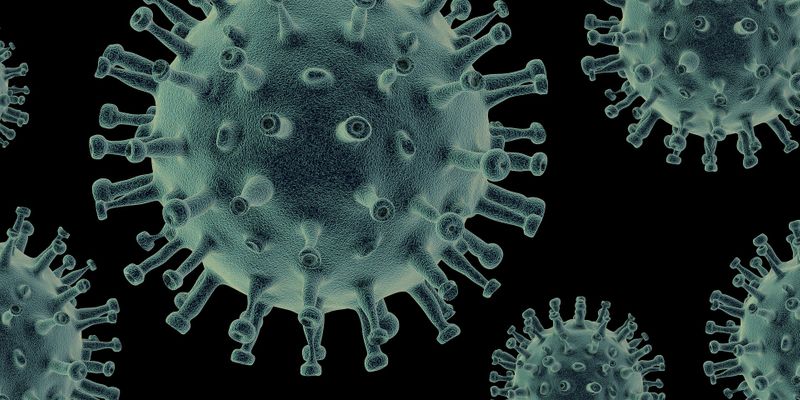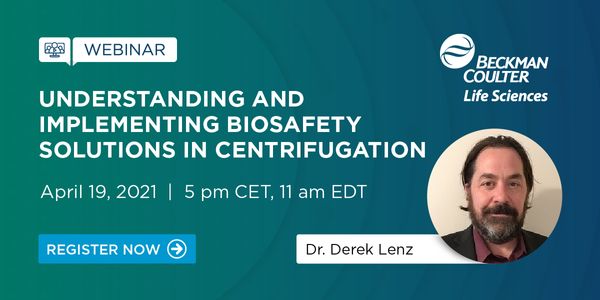Viral
The term viral refers to an infection driven by a virus and examples include COVID-19, AIDS, measles, hepatitis, and smallpox. Viruses contain DNA or RNA and must infect host cells in order to replicate and they can damage the host during this process. Antiviral medications or vaccines can treat viral infections.
-
APR 22, 2021 | 10:30 AMNucleic acid amplification tests (NAAT) are a reliable, sensitive, and accurate diagnostic approach used in viral detection. The approach involves the isolation of nucleic acids from a sampl...APR 21, 2021 | 12:00 AMAs viral threats continue to emerge, viral detection assays are important not only for recognizing if a virus is present, but also for surveillance and variant characterization. Accurate det...APR 21, 2021 | 12:00 AMHistorically, nasopharyngeal sampling has been considered the gold standard for the detection of most upper respiratory tract infections, however major medical and laboratory supply chain is...APR 21, 2021 | 12:00 AMAs the SARS-CoV-2 continues to spread and evolve and vaccination efforts are under way, countries around the world are confronting new public health challenges due to the emergence and rapid...APR 20, 2021 | 4:30 PMC.E. CREDITSCOVID-19 is a severe disease that has caused >1 million deaths in under one year. As this disease is novel, the molecular and cellular underpinnings of the progressive tissue injury are p...Speaker: Christopher Mason, Ph.DAPR 20, 2021 | 4:30 PMInterest in cell and gene therapy-based disease prevention and treatment has increased rapidly over the last few decades, however there are still many hurdles to overcome and further progres...Speaker: Andrea O'Hara, PhDAPR 20, 2021 | 12:00 PMNanoCellect will discuss the importance of cell sample preparation in order to obtain good quality sequencing data with 3’ RNA-Seq as well as cell sample preparation in order to obtain...Speaker: Nicole Jagnandan, PhDAPR 20, 2021 | 6:00 AMSince late 2020, several prominent SARS-CoV-2 variants of concern have emerged harboring specific mutations which increase viral transmissibility (e.g., lineage B.1.1.7), and which appear to...Speaker: Brian Dugan, M.S. , Fernando Spikli, PhDAPR 19, 2021 | 8:00 AMDate: Apri 19, 2021 Time: 8:00am PDT, 5:00pm CEST Since the inception of modern biological research, BioSafety has evolved into a critical consideration in Good Laboratory Practices (GLP). Wi...APR 14, 2021 | 4:30 PMWhen SARS-CoV-2 reached the United States in late January 2020, Labcorp immediately began development of an RT-PCR test to aid in detection and diagnosis of COVID-19 in infected patients. As...APR 14, 2021 | 3:00 PMDr. Jordan RoseFigura from Swift Biosciences will present on the technology created to enable this research that covers 99.7 % of the SARS-CoV-2 genome from limited viral titers. Including a...APR 14, 2021 | 1:30 PMThis presentation will focus on strategies for the design and validation of robust assays for the detection of SARS-CoV-2, including nucleic acid extraction, multiplexed qPCR assays, and int...Speaker: Manohar R. Furtado, PhDAPR 14, 2021 | 1:30 PMSeveral SARS-CoV-2 variants are circulating globally. The most prominent variants of concern, including the B.1.1.7, B.1.351 and B1.1.28 lineages, not only carry a constellation of genetic m...Speaker: Anthony Tong, PhD , Subodh NimkarAPR 14, 2021 | 12:00 PMEven as COVID-19 vaccines are being deployed around the world, the clinical laboratory will continue to play a major role this year helping to control the pandemic by diagnosing new infectio...Speaker: Russell Garlick, PhD , Nathan A. Ledeboer, PhDAPR 14, 2021 | 9:00 AMAsymptomatic SARS-CoV-2 infection and delayed implementation of diagnostics have led to poorly defined viral prevalence rates. To address this, we analyzed seropositivity in US adults who ha...APR 14, 2021 | 6:00 AMTwo studies on the immunology of COVID-19 are included in this webinar: First, Eugenia Ong, PhD with the Viral Research and Experimental Medicine Centre @ SingHealth Duke-NUS (ViREMiCS) and...Speaker: Eugenia Z. Ong, PhD , Joe Poh Sheng Yeong, MBBS PhD Mmed (Path)APR 14, 2021 | 6:00 AMCOVID 19 is caused by a new coronavirus , SARS-CoV-2, which is highly infectious and can cause a wide spectrum of symptoms and affect multiple human systems. What we have learned from other...APR 14, 2021 | 12:00 AMDespite a continuous decline of corona virus cases, the broad rollout of multiple vaccines, and the start of a return to normalcy, concerns of SARS-CoV-2 outbreaks continue to linger on the...APR 14, 2021 | 12:00 AMThe global pandemic of Coronavirus disease 2019 (COVID-19), caused by Severe Respiratory Syndrome Coronavirus 2 (SARS-CoV-2), has highlighted the importance of surveillance efforts to closel...APR 14, 2021 | 12:00 AMDeveloping an in vitro diagnostic device is often a complex and demanding process. Doing so in the midst of a pandemic and the IVD global supply chain stretched like never before, with proje...APR 07, 2021 | 12:00 PMRecombinant adeno-associated virus (AAV) and lentiviral vectors (LV) are vehicles for direct delivery of therapeutic genes to patients' cells. In the coming years, the use of AAV and LV...Speaker: Sandy Tseng, PhDAPR 07, 2021 | 1:00 PMIn this fireside chat, we’ll discuss how gene editing protocols can benefit from long-read sequencing at various stages to optimize and enhance vector integrity, which cannot be addres...Speaker: Elizabeth Louie, Ph.D.APR 07, 2021 | 10:00 AMSynthetic adeno-associated virus (AAV) biology is an emerging interdisciplinary field that involves the re-design of all AAV components, including capsids, packaged genomes, and starting mat...Speaker: Jude Samulski, Ph.D.APR 07, 2021 | 12:00 AMPotency is a critical quality attribute of biological products, defined by the US FDA as the specific ability of the product to cause the required therapeutically clinical benefit. Potency a...
APR 22, 2021 | 10:30 AM
Nucleic acid amplification tests (NAAT) are a reliable, sensitive, and accurate diagnostic approach used in viral detection. The approach involves the isolation of nucleic acids from a sampl...
APR 21, 2021 | 12:00 AM
As viral threats continue to emerge, viral detection assays are important not only for recognizing if a virus is present, but also for surveillance and variant characterization. Accurate det...
APR 21, 2021 | 12:00 AM
Historically, nasopharyngeal sampling has been considered the gold standard for the detection of most upper respiratory tract infections, however major medical and laboratory supply chain is...
APR 21, 2021 | 12:00 AM
As the SARS-CoV-2 continues to spread and evolve and vaccination efforts are under way, countries around the world are confronting new public health challenges due to the emergence and rapid...
APR 20, 2021 | 4:30 PM
C.E. CREDITS
COVID-19 is a severe disease that has caused >1 million deaths in under one year. As this disease is novel, the molecular and cellular underpinnings of the progressive tissue injury are p...
Speaker:
Christopher Mason, Ph.D
APR 20, 2021 | 4:30 PM
Interest in cell and gene therapy-based disease prevention and treatment has increased rapidly over the last few decades, however there are still many hurdles to overcome and further progres...
Speaker:
Andrea O'Hara, PhD
APR 20, 2021 | 12:00 PM
NanoCellect will discuss the importance of cell sample preparation in order to obtain good quality sequencing data with 3’ RNA-Seq as well as cell sample preparation in order to obtain...
Speaker:
Nicole Jagnandan, PhD
APR 20, 2021 | 6:00 AM
Since late 2020, several prominent SARS-CoV-2 variants of concern have emerged harboring specific mutations which increase viral transmissibility (e.g., lineage B.1.1.7), and which appear to...
Speaker:
Brian Dugan, M.S.
, Fernando Spikli, PhD
APR 19, 2021 | 8:00 AM
Date: Apri 19, 2021 Time: 8:00am PDT, 5:00pm CEST Since the inception of modern biological research, BioSafety has evolved into a critical consideration in Good Laboratory Practices (GLP). Wi...
APR 14, 2021 | 4:30 PM
When SARS-CoV-2 reached the United States in late January 2020, Labcorp immediately began development of an RT-PCR test to aid in detection and diagnosis of COVID-19 in infected patients. As...
APR 14, 2021 | 3:00 PM
Dr. Jordan RoseFigura from Swift Biosciences will present on the technology created to enable this research that covers 99.7 % of the SARS-CoV-2 genome from limited viral titers. Including a...
APR 14, 2021 | 1:30 PM
This presentation will focus on strategies for the design and validation of robust assays for the detection of SARS-CoV-2, including nucleic acid extraction, multiplexed qPCR assays, and int...
Speaker:
Manohar R. Furtado, PhD
APR 14, 2021 | 1:30 PM
Several SARS-CoV-2 variants are circulating globally. The most prominent variants of concern, including the B.1.1.7, B.1.351 and B1.1.28 lineages, not only carry a constellation of genetic m...
Speaker:
Anthony Tong, PhD
, Subodh Nimkar
APR 14, 2021 | 12:00 PM
Even as COVID-19 vaccines are being deployed around the world, the clinical laboratory will continue to play a major role this year helping to control the pandemic by diagnosing new infectio...
Speaker:
Russell Garlick, PhD
, Nathan A. Ledeboer, PhD
APR 14, 2021 | 9:00 AM
Asymptomatic SARS-CoV-2 infection and delayed implementation of diagnostics have led to poorly defined viral prevalence rates. To address this, we analyzed seropositivity in US adults who ha...
APR 14, 2021 | 6:00 AM
Two studies on the immunology of COVID-19 are included in this webinar: First, Eugenia Ong, PhD with the Viral Research and Experimental Medicine Centre @ SingHealth Duke-NUS (ViREMiCS) and...
Speaker:
Eugenia Z. Ong, PhD
, Joe Poh Sheng Yeong, MBBS PhD Mmed (Path)
APR 14, 2021 | 6:00 AM
COVID 19 is caused by a new coronavirus , SARS-CoV-2, which is highly infectious and can cause a wide spectrum of symptoms and affect multiple human systems. What we have learned from other...
APR 14, 2021 | 12:00 AM
Despite a continuous decline of corona virus cases, the broad rollout of multiple vaccines, and the start of a return to normalcy, concerns of SARS-CoV-2 outbreaks continue to linger on the...
APR 14, 2021 | 12:00 AM
The global pandemic of Coronavirus disease 2019 (COVID-19), caused by Severe Respiratory Syndrome Coronavirus 2 (SARS-CoV-2), has highlighted the importance of surveillance efforts to closel...
APR 14, 2021 | 12:00 AM
Developing an in vitro diagnostic device is often a complex and demanding process. Doing so in the midst of a pandemic and the IVD global supply chain stretched like never before, with proje...
APR 07, 2021 | 12:00 PM
Recombinant adeno-associated virus (AAV) and lentiviral vectors (LV) are vehicles for direct delivery of therapeutic genes to patients' cells. In the coming years, the use of AAV and LV...
Speaker:
Sandy Tseng, PhD
APR 07, 2021 | 1:00 PM
In this fireside chat, we’ll discuss how gene editing protocols can benefit from long-read sequencing at various stages to optimize and enhance vector integrity, which cannot be addres...
Speaker:
Elizabeth Louie, Ph.D.
APR 07, 2021 | 10:00 AM
Synthetic adeno-associated virus (AAV) biology is an emerging interdisciplinary field that involves the re-design of all AAV components, including capsids, packaged genomes, and starting mat...
Speaker:
Jude Samulski, Ph.D.
APR 07, 2021 | 12:00 AM
Potency is a critical quality attribute of biological products, defined by the US FDA as the specific ability of the product to cause the required therapeutically clinical benefit. Potency a...
























